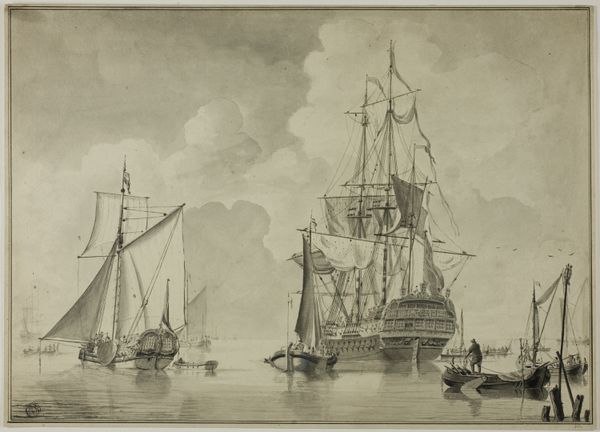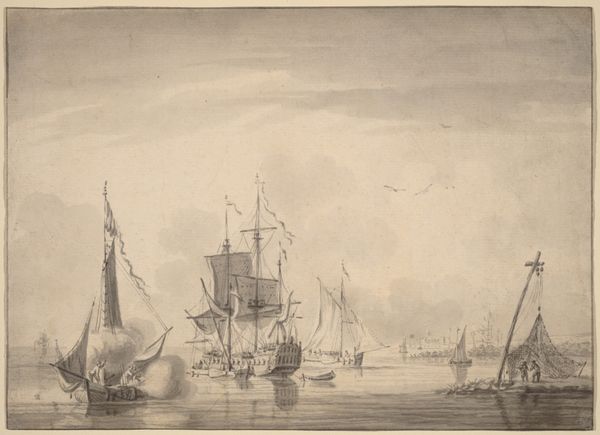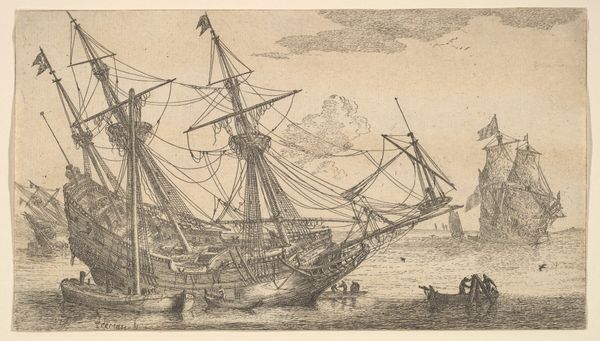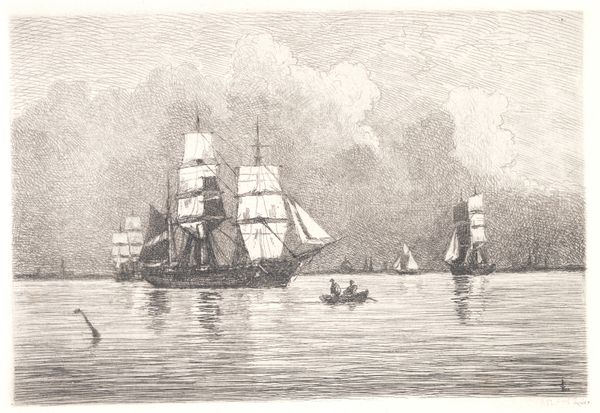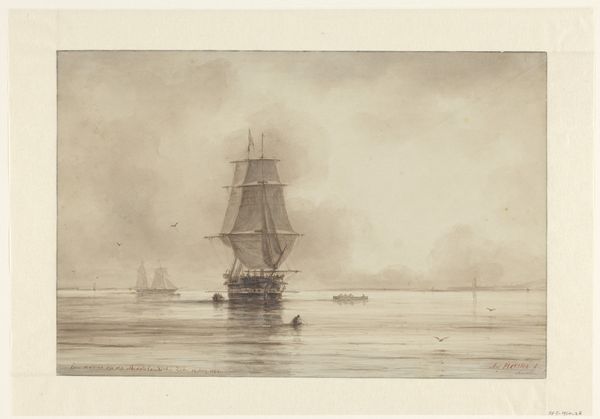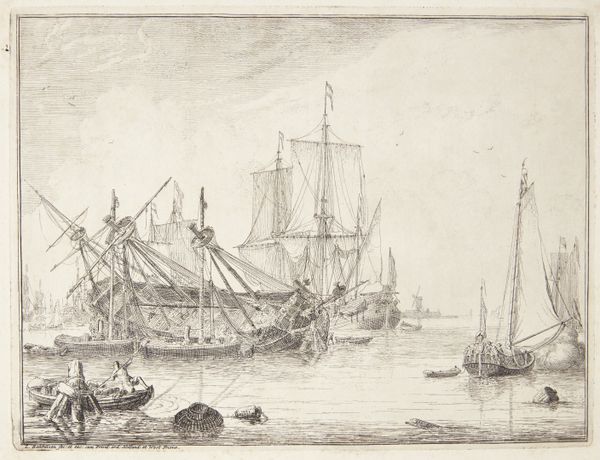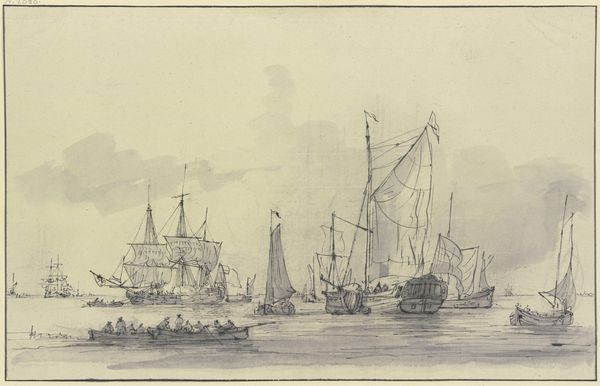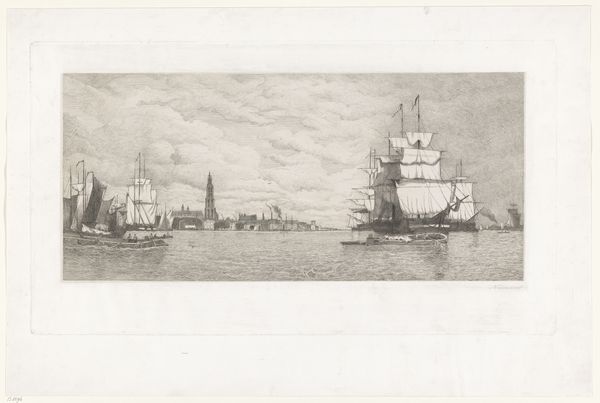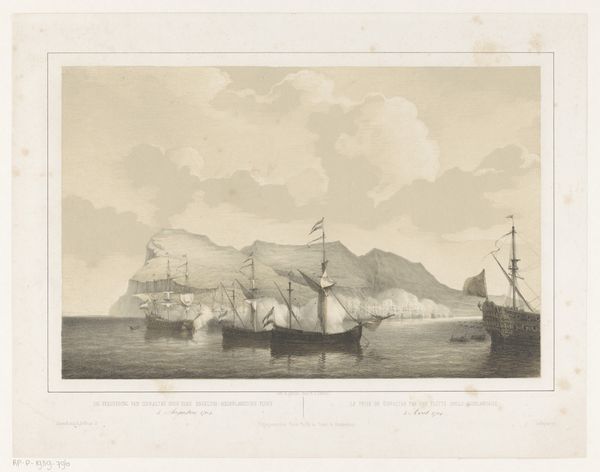
The English Fleet Anchored at the Town of Beykoz, North of Istanbul 1853
0:00
0:00
Dimensions: sheet: 11 5/8 x 15 3/16 in. (29.5 x 38.5 cm)
Copyright: Public Domain
Editor: Here we have Anton Melbye's 1853 drawing, "The English Fleet Anchored at the Town of Beykoz, North of Istanbul," rendered in pencil. The drawing style seems meticulous, almost like a photograph. I am immediately struck by the stillness and serenity of the scene, despite the numerous ships present. What underlying stories or societal implications might be lurking beneath the surface? Curator: An excellent observation. Consider the Crimean War, escalating around the same time this drawing was created. What was the role of Britain's naval power in that conflict, and how would the public perceive displays of such maritime strength? Editor: So, rather than a peaceful snapshot, this image might be a deliberate statement of power, almost a form of propaganda? Curator: Precisely. These ships were not merely picturesque; they represented Britain’s military might and its strategic interests in the region. Furthermore, consider the choice of Istanbul as a backdrop. What did this setting represent in the mid-19th century geopolitical landscape? Editor: Istanbul, formerly Constantinople, held a significant place in trade routes, but also a symbolic past as the fallen Byzantine capital… Curator: Indeed! And in 1853, the Ottoman Empire was viewed as “the sick man of Europe,” with other European powers vying for influence and territory. How does that affect your view of the image now? Editor: It shifts everything. Suddenly, the calmness feels…ominous, a quiet prelude to conflict and colonial ambitions. The detailed realism reinforces the power being displayed in the drawing. Curator: It’s important to think about what and *who* the artist includes, but also what’s omitted. There are implications to any artistic decision made when creating images of state power. Editor: I see that so clearly now. I went from admiring the technical skill to understanding the strategic communication inherent in the image. Curator: Exactly. Art doesn't exist in a vacuum, but responds to and shapes culture. Always ask, who benefits from this image?
Comments
No comments
Be the first to comment and join the conversation on the ultimate creative platform.
